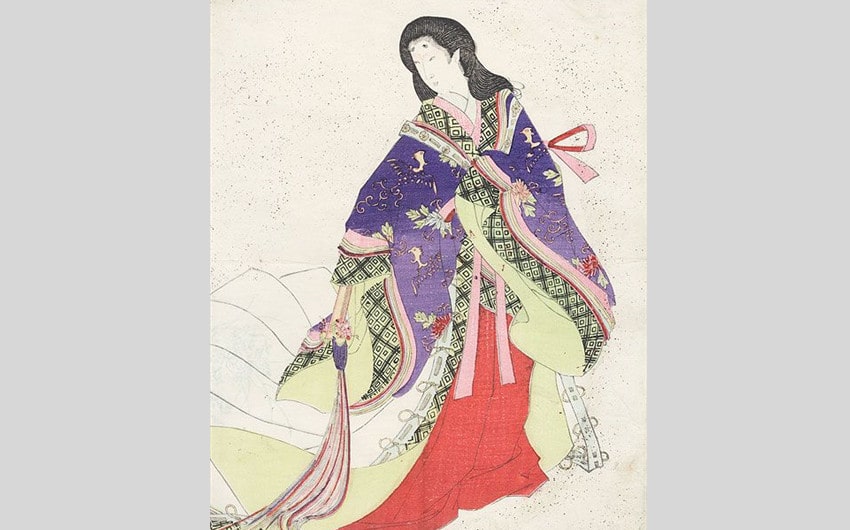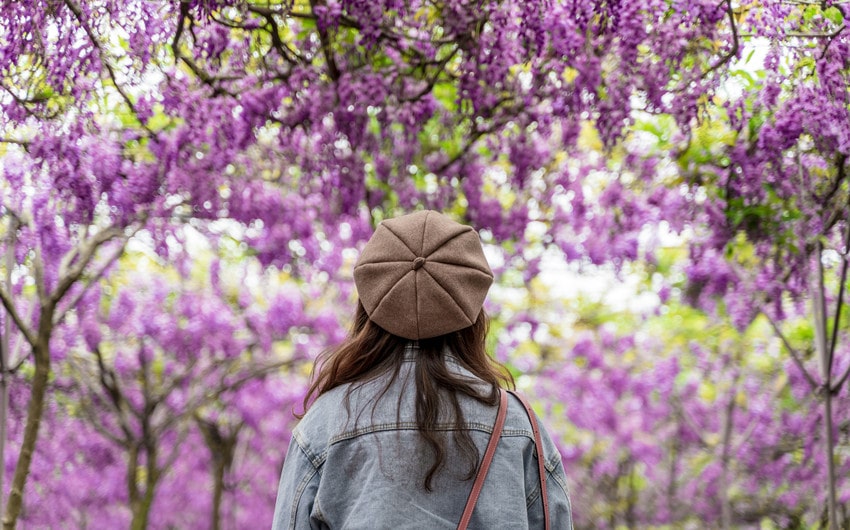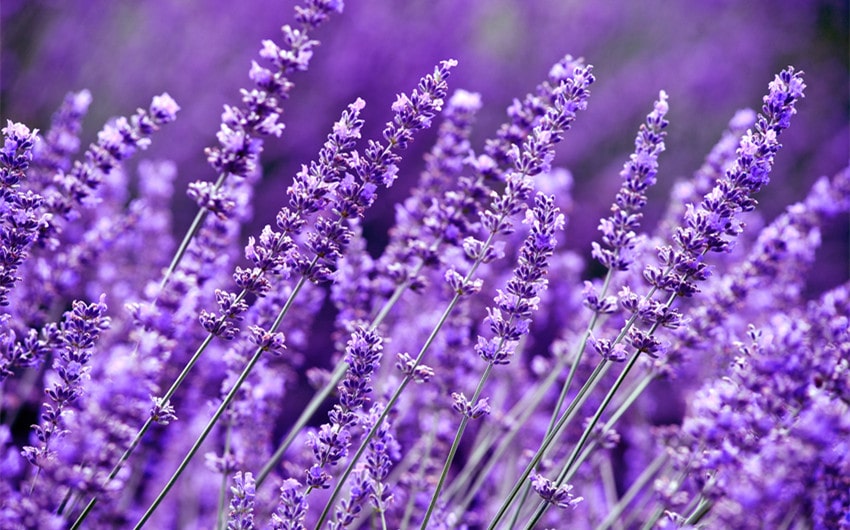In the kaleidoscope of Japanese culture, colors hold profound meanings, with purple standing as a hue of nobility, mystery, and spirituality. Among these, Japanese names that mean purple capture the imagination, each telling a story of beauty and tradition. This article unveils the charm behind seven such names, inviting you on a journey through their cultural depths.
The Significance of Purple in Japanese Culture

Image source: Pinterest
In Japanese culture, the color purple holds a revered spot, symbolizing nobility, spirituality, and sophistication. Historically, purple dye was exceedingly rare and expensive, making it a color worn exclusively by the imperial family and aristocrats during the Heian Period, signifying high status and wealth.
Beyond its regal connotations, purple is also deeply spiritual, often associated with Buddhism where it represents divinity and the mystic. This spiritual significance is reflected in temples and religious ceremonies, where purple adorns the altars and robes, bridging the earthly with the celestial.
In modern Japan, purple continues to evoke a sense of artistic beauty and creativity. It’s a color frequently found in traditional arts, from the delicate patterns of kimono fabrics to the vibrant strokes of ukiyo-e woodblock prints.
The appreciation of purple extends to nature, celebrated in the myriad shades of flowers like lavender, iris, and wisteria, each bloom a testament to the color’s enduring allure in Japanese aesthetic and philosophical thought.
Japanese Girl Names That Mean Purple

- Murasaki (紫) – Directly translates to “purple.”
- Sumire (菫) – Means “violet,” a purple flower.
- Yukari (紫) – A name associated with purple, conveying deep connection and beauty.
- Ayame (菖蒲) – Refers to the iris, often depicted in shades of purple.
- Shion (紫苑) – Represents the aster flower, which is purple.
- Fuji (藤) – Named after wisteria, which has beautiful purple flowers.
- Beni (紅) – Though often meaning “crimson,” it can also refer to a deep reddish-purple.
- Kikyo (桔梗) – Referring to the bellflower, which is typically purple.
- Murasakino (紫野) – Literally means “purple field,” evoking images of fields of lavender.
- Shikibu (式部) – Inspired by Murasaki Shikibu, with “Murasaki” also meaning purple.
- Rindo (竜胆) – Named after the gentian flower, known for its vivid blue and purple hues.
- Murasakihana (紫花) – Means “purple flower.”
- Ai (藍) – While primarily meaning “indigo,” it can represent shades of deep blue and purple.
- Sakura (桜) – Some varieties of cherry blossoms have a purplish hue.
- Yamabuki (山吹) – Refers to Kerria japonica; although not purple, the name is used creatively for girls to imply rarity and beauty.
- Sumika (紫華) – Means “brilliant purple.”
- Lavender (ラベンダー) – English origin but used in Japan for its association with the purple flower.
- Eika (栄華) – Signifies “prosperous and purple,” implying both wealth and the color.
- Umemurasaki (梅紫) – A combination of “plum” and “purple,” referring to the color of plum blossoms.
- Shiuli (紫雨) – Means “purple rain,” a poetic imagery.
- Murako (紫子) – Combines purple with a common suffix for girls’ names, meaning “child of purple.”
- Fujiko (藤子) – Derived from wisteria, emphasizing the childlike innocence and beauty of purple.
- Tsumugi (紬) – Referring to a type of silk that can be dyed in deep purples.
- Yuka (由紫) – A name that suggests “cause of purple,” symbolizing the origin or reason behind the color.
- Miyabi (雅) – While it means “elegance,” it’s often associated with sophisticated colors like purple.
- Sion (詩音) – A modern name evoking the sound of poetry, often linked to the imagery of purple landscapes.
- Wakaba (若葉) – “Young leaf,” signifying new beginnings and the freshness of spring, where purple flowers bloom.
- Aoi (葵) – While it typically means “hollyhock,” some variations of the flower and the name hint at a purple color.
- Haruka (遥) – Signifying “distant,” it evokes the vastness of a purple twilight sky.
- Rika (里香) – Means “fragrant village,” but when written with certain kanji, it can imply a village adorned with purple flowers.
- Mao (舞桜) – “Dancing cherry blossom,” with some cherry blossoms showing off purple shades.
- Sakurako (桜子) – “Child of cherry blossom,” encompassing those with a purplish tint.
- Fumiko (文子) – While it means “child of literature,” it’s included for its sophistication, akin to the aura of purple.
- Himari (陽葵) – “Sun + hollyhock,” with the potential for a purple nuance.
- Kanoko (鹿の子) – Meaning “fawn,” indicative of something precious and tender, as some view the color purple.
- Reika (麗華) – “Beautiful flower,” which can be associated with the beauty of purple flora.
- Sayaka (紗也加) – With the right kanji, can imply a refined, purple elegance.
- Seika (青華) – “Blue flower,” but in the right context, can lean towards a bluish-purple.
- Yuriko (百合子) – “Child of lilies,” with some lilies being a captivating purple.
- Nozomi (望) – Meaning “hope,” often linked to the uplifting feel that a vibrant purple can evoke.
Japanese Boy Names That Mean Purple

- Shion (紫苑) – Represents the aster flower, known for its purple hue, symbolizing remembrance.
- Murasaki (紫) – Literally means “purple,” a rare and noble color in Japanese culture.
- Yukari (紫) – Signifies connection and beauty, often associated with purple.
- Sumire (菫) – Though typically feminine, it can be used for boys, meaning “violet.”
- Fuji (藤) – For wisteria, a plant with beautiful purple flowers, symbolizing patience and longevity.
- Rindo (竜胆) – Named after the gentian flower, which is often blue or purple, symbolizing a strong and noble spirit.
- Shikibu (式部) – Inspired by the literary figure Murasaki Shikibu, indirectly associating with the color purple.
- Ayame (菖蒲) – Iris, which can have purple hues, representing wisdom and courage.
- Kikyo (桔梗) – Bellflower, which has a deep purple color, symbolizing honesty and endurance.
- Aoi (葵) – Hollyhock, which can come in purple, symbolizing ambition and respect.
- Tatsumi (巽) – A name implying direction, associated with the subtlety of dusk and dawn, where the sky turns shades of purple.
- Ryūka (龍香) – Dragon fragrance, evoking the mystical and rare essence of purple.
- Sora (空) – Meaning sky, as the sky can turn a beautiful purple at dusk and dawn.
- Yoru (夜) – Night, reflecting the deep purples of the night sky.
- Kaito (海斗) – Sea and sky, which can both appear purple under certain conditions.
- Rei (怜) – Wise, reflecting the dignified and mystical aspects of purple.
- Yuta (悠太) – Signifying vastness, akin to an expansive purple dusk.
- Hikaru (光) – Light, capturing the glimmer of twilight’s purple hue.
- Kai (海) – Sea, which mirrors the sky’s purple at twilight.
- Eiji (永治) – While not directly related to purple, it signifies eternity and harmony, echoing the depth of purple.
Conclusion
The world of Japanese names that mean purple is rich with history, symbolism, and beauty. These seven names offer a glimpse into a tradition where every hue tells a story, and every name is a window into the soul of a culture. As we explore these names, we’re reminded of the enduring influence of nature, art, and history in shaping human identity.







